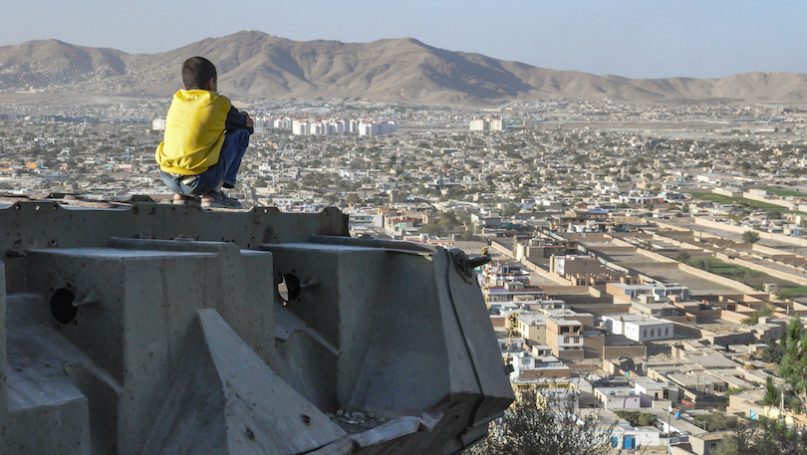Jaimin Parikh

As I celebrated India’s 75th Independence Day on 15th August a sudden thought arose of whether Afghanistan could have been free and independent had they had someone like Mohandas Karamchand Gandhi in their homeland. To complete this thought experiment I will not go into diplomatic, social, and cultural reasons of what happened and how it happened in Afghanistan as the Taliban returned to power, but will explore the probable way an “Afghan Gandhi” (which could be an individual of any gender, or even an organization) would have led the struggle. Mahatma Gandhi’s struggle against political tyranny was based on two elements which were always a part of whatever decisions and struggle he had carried – satyagrah or path of truth and ahimsa or non-violence. From non-cooperation to civil disobedience – and from personal life to the political sphere – these are the yardsticks of understanding Gandhi’s methods to deal with peace and conflict resolution.
An “Afghan Gandhi” would have realized that Kabul doesn’t only need political stability but also eternal peace and permanent conflict resolution. Political stability can be maintained through force, diplomacy, bombs, and gunfire but peace cannot. Peace is a more holistic approach that requires winning heart through rationale and logic by adopting the path of truth and non-violence. The question may arise – “Cannot political stability automatically led to peace and resolve the conflict once the democratic system is established?”. The straightforward answer to this, what an “Afghan Gandhi” would have given, is “No. Not at all”. The reason lies in the fact that be it a political struggle or personal life, one cannot separate “means” from the “ends” i.e. to say that peace cannot be achieved through non-peaceful methods. This is because by going through violent means to achieve the ends of stability – which is wrongfully perceived as peace – one tends to create violent mindsets which emerge later on to destroy the perceived peace (the stability).
Hence, an “Afghan Gandhi” would have had opted for a personal as well as political struggle based on truth and non-violence via the methods of non-cooperation and civil disobedience during the first undemocratic regime of the Taliban from 1996. The masses of Afghanistan would have been urged to get themselves physically and mentally prepared for the pain and suffering they would go through to transform their country permanently. The ‘suffering’ because they would have adopted the path of non-violence and truth by being ready to bravely face the punishment by the tyrants but not co-operating with their dictatorial orders to maintain Taliban-style law and order.
Next, would have been a request for the people to boycott all the offices, institutions, and governing bodies in which the tyrants were involved thereby disobeying and breaking the oppressive rules and laws. The basic idea is twofold: first, the tyrants cannot continue the rule without cooperation and obedience of people at the grassroots who are well aware of ‘know-hows’ of institutions like industries, banks, hospitals, etc. and second, appealing to the conscience of the oppressors to ‘change’ its nature. Further, once a subset of people would have been free from the fear of the oppressor then no force could stop them from spreading the same fearlessness and rationale ideas to their fellow Afghans.
Also, any “Afghan Gandhi” would have appealed to the masses to do constructive works like promoting and providing education to all, spreading the tolerant nature to accept the criticisms, promoting inter-cultural harmony, working towards enhancing scientific skills and temperament among all, and others. This could have been done by using the same tool which the oppressor has been using ever since to promote hatred, intolerance, and bigotry – such as the Quran. By invoking various aspects of the text which promote the constructive works mentioned, the “Afghan Gandhi” would have positively influenced the population as well as countered the Taliban in their language.
The combination of the two processes mentioned above would have had a material impact on the Taliban. Either they would have ‘changed’ if appeals reached their conscience or they would lose their popular support. By doing this, the “Afghan Gandhi” would have also countered the recurrent narrative about external forces interfering in the country. Hence, among all the major fronts the Taliban would have been defeated.
Considering the past, the question arises of whether we can expect this “Afghan Gandhi” to emerge in the time ahead?. To answer this let me quote Gandhi from 15th August 1947 when he sent a message to ministers of cabinet:
From today, you have to wear the crown of thorns. Strive ceaselessly to cultivate truth and non-violence. Now, you will be tested through and through… Beware of power; power corrupts.
As a matter of fact, the Taliban has made the same mistake that others did. In order to achieve their own version of stability and peace they forgot that ends can never justify the means and hence the offshoots of discontent and instability, which I described earlier in this article, are bound to come in near future. Even if it doesn’t get highlighted internationally it will be present at grassroots in various forms. This is where the “Afghan Gandhi” can bear – at grassroots – and can follow the Gandhian methods of truce.
The responsibility which would lie on the shoulders of this prospective “Afghan Gandhi” would be to follow the methods of transformation and not destruction in order to positively influence the masses to get ready for physical and mental pain which they will have to go through in process of truth and non-violence and then finally bring the grassroots democracy. The lesson of Afghanistan is that one cannot expect that peace, stability, nationalism, and conflict resolution can be ‘enforced’. Rather these have to be grown and nurtured from within – from the grassroots.
No comments:
Post a Comment